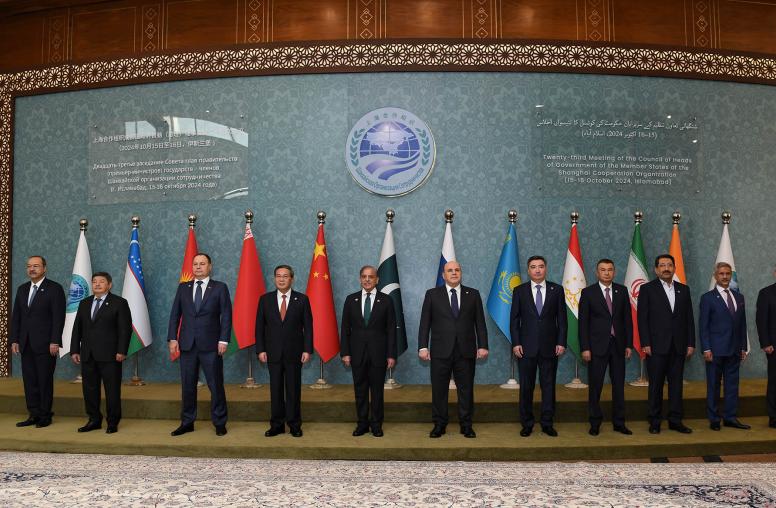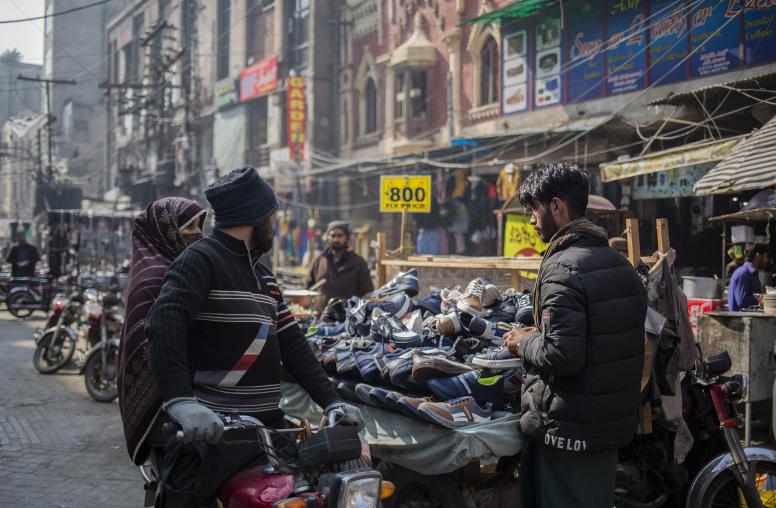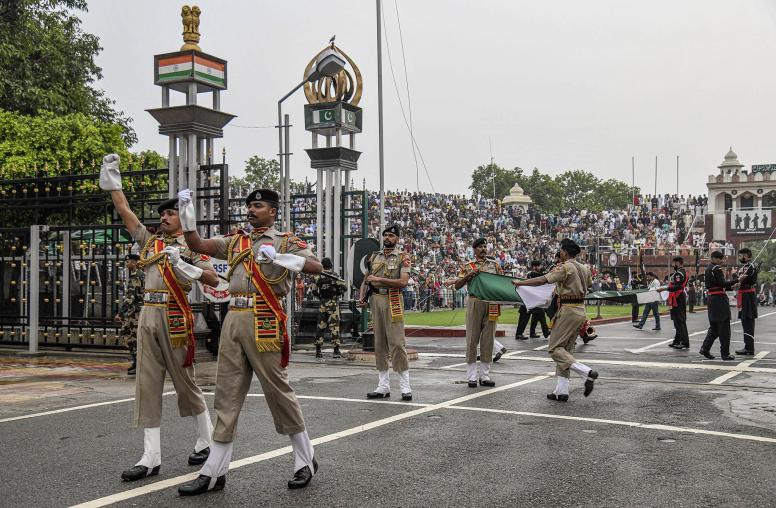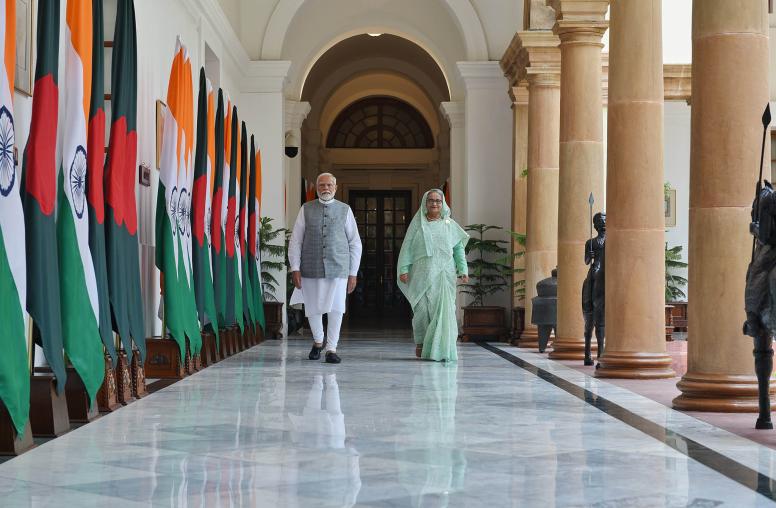Pakistan’s Roadmap for COP27: In Search of a Strategic Vision
After devastating floods, Pakistan will make its appeal for long-term aid at COP27. But can they make a convincing case?
The international community has gathered this week in Egypt for the U.N. Climate Change Conference (COP27) and will be discussing a range of issues including loss and damage, climate finance, adaptation and mitigation over the next two weeks. This year’s COP27 is being held in the aftermath of Pakistan’s disastrous summer floods, which led to the announcement that Pakistan’s Prime Minster Shahbaz Sharif will serve as vice-chair of the summit.

This — combined with Pakistan’s presidency of the G77 this year — has afforded Pakistan a significant place on the international stage to make its case for continued support toward post-flood recovery and reconstruction.
However, it remains to be seen how Pakistan will take advantage of this opportunity. Will Pakistani leaders be able to present a coherent and convincing case for further assistance from the international community in both the short- and long-term? Or will the fractured nature of the country’s domestic political landscape overshadow relief and recovery efforts?
The Economic Costs of this Summer’s Floods
While we won’t know the total impact of the 2022 floods for weeks or even months, the human cost is already stark. As of mid-October, 33 million people (one out of every seven Pakistanis) were affected by the floods, with 8 million estimated to have been displaced. The death toll directly caused by the floods was roughly 1,700, one-third of which were children.
And as Pakistan enters the recovery phase, the government estimates that over 9 million people could be pushed into poverty, with 19 of the 25 poorest districts in Pakistan deemed “calamity-affected.” Add in an estimated $30 billion in damages and economic losses, and the situation in Pakistan appears even more dire.
Pakistan also owes $1 billion in debt obligation payments by the end of the year. The additional economic strain presented by the floods has led to serious concerns that Pakistan will not be able to meet this payment.
No government officials have outright said that Pakistan will default on the debt, and some have offered reassurances the country would meet all its debt obligations. However, Planning Minster Ahsan Iqbal lamented how difficult it will be for Pakistan to meet the conditions imposed by the International Monetary Fund (IMF), especially the bars on government spending, in light of the severe impact the floods have had on the country. Iqbal has stated he hopes that the IMF would revisit these conditions so that greater funds can be put towards relief and recovery efforts.
Political Turmoil is Distracting from Flood Recovery
If the economic crisis wasn’t enough, tensions between the ruling PML-N/PPP government and the PTI opposition are at an all-time high. This political infighting has distracted from the medium- and long-term challenges for recovery and reconstruction, which includes an immediate public health crisis and longer-term food insecurity.
Many parts of the country are experiencing a severe public health crisis, with the World Health Organization noting that Pakistan has seen a sharp rise in malaria as well as diarrheal diseases, a dengue fever outbreak, measles and diphtheria.
Further, malnutrition will also rise due to food insecurity and inflation. The floods wiped out 80 percent of the country’s crops, and perishable food prices are now over 70 percent higher when compared to this time last year. The fallout will be most acutely seen in newborns and infants — if mothers are undernourished, they won’t be able to produce sufficient milk to feed their children and most likely will not be able to afford formula.
It’s imperative that Pakistan capitalize on its unique position at COP27 and provide tangible steps and actions that the government will take to address its “natural security” crisis as international actors weigh aid commitments.
A Call for Climate Justice
Up until now, the rallying cry from the current PML-N/PPP government has focused on climate justice. However, the narrative has expanded to include debt relief and climate financing. During his trip to the U.N. General Assembly, Prime Minister Sharif made a forceful argument for debt relief as a part of climate justice, stating that “all hell will break loose” if rich nations do not provide Pakistan with debt relief.
On Monday at COP27, Prime Minster Sharif, standing alongside U.N. Secretary General António Guterres, reiterated the call for debt relief and climate compensation for Pakistan as public debt was “hampering its recovery.” Even Guterres called upon the international community and multilateral lending institutions to reform their polices and allow for debt swaps, especially in the aftermath of natural disasters.
To this end, Pakistan could draw lessons from efforts by Small Island Developing States, who have engaged in discussions about tying debt relief to plans for adaption to climate change and disaster responses.
A “debt-for-climate” swap would entail all or part of a country’s multilateral or bilateral debt to be forgiven — under the condition that the borrowing country will utilize those newly available funds for climate adaptation, mitigation and disaster management. There are examples of debt-for-climate swaps on a smaller scale, such as between the United States and Jamaica for conservation efforts. But there is very little precedent for the scale of swap that Pakistan might pursue. To build traction for a large-scale debt-for-climate swap, Pakistan would need to have a tangible plan with clear benchmarks in place for how these freed-up funds would be utilized in an equitable manner.
Pakistan’s minister for climate change has also stated that climate justice will be the cornerstone of Pakistan’s diplomatic approach for COP27, noting that “Pakistan will seek to put the creation of a Loss and Damage Finance Facility on the agenda.”
This would be a first for the conference. Loss and damage are always integral to discussions based on Article 8 of the Paris Climate Agreement. But Pakistan’s strategy for COP27 would embed loss and damage as part of discussions surrounding Article 6, which deals with climate financing — something that is rarely included at these meetings.
While COP27 is not meant to be a venue to make direct appeals for flood assistance, there is a proposed donors’ conference to raise funds for post-flood aid expected to be held by the end of 2022. With that conference on the horizon, the narrative that Pakistan presents at COP27 — particularly regarding climate financing and loss and damage — will be crucial in laying the groundwork for a comprehensive plan to not just rehabilitate and reconstruct after the floods, but also to build resilience in the face of future climate-induced disaster.
How to Capitalize on COP27
A blank check for purely development assistance will not help Pakistan. The Pakistani state, at all levels, needs to focus on longer-term technical assistance and build their own internal capacity to create resilience to future natural disasters. At COP27, international partners and possible donors will be looking for indications that Pakistan is ready to commit to this sort of forward-thinking strategy for tackling its climate change challenges in the years ahead.
To some degree, Pakistan has laid the groundwork already. The most recent National Security Policy (NSP) included action against climate change as a component of human security. However, the NSP narrowly defined climate change by connecting it with water security. Food security and other related issues were discussed separately. Written in 2021 and published in the early months of 2022, the policy does not consider how climate change and climate-induced disasters impact all aspects of human security — such as migration and population, gender security, food security and health security. All of these issues were exacerbated by the floods and will worsen in the post-flood recovery period.
To address its overarching climate change challenge, the Pakistan government recently established the National Flood Response Coordination Center (NFRCC). Modeled after the mechanism used by the previous government to respond to the COVID-19 pandemic, the NFRCC is tasked with ensuring coordination across various agencies involved in both the flood response and rehabilitation efforts, as well as working with international donors and nongovernmental organizations on relief.
But new systems and bodies are not always the answer, or the answer alone. And if Pakistan is to capitalize on its opportunity at COP27 and beyond, the state must show a willingness to strengthen established institutions tasked with addressing disasters, whether natural or man-made. This includes the National Disaster Management Authority, which was established after the 2010 floods, along with their provincial counterparts. The Pakistani government must commit to adequate funding for these institutions as well as the National Disaster Risk Management Fund and the District Disaster Management Authorities across the country.
Moving forward, the Pakistani government must develop a roadmap for sweeping internal reforms when it comes to climate change preparedness and identify key entry points for the international community to support Pakistan’s efforts to adapt to and mitigate the impacts of climate change.
How the International Community Can Help
Where the United States and the international community can play an immediate role is in the provision of seeds that are high yield and drought- and flood-resistant, as well as more cooperation on improved agricultural practices now that we are in the planting season.
This would need to be combined with efforts to provide food to offset malnutrition — particularly for displaced children who are not able to return to school — and better planning for evacuation, especially temporary shelters for evacuees.
Longer term, the international community can also support comprehensive early warning systems and technologies to better gauge weather and rainfall patterns and ensure that this data can be used not just for predictive modeling, but also for better disaster preparedness and policy.
Given the scale and scope of the disaster, there is no sustainable recovery without international support. Which is why a comprehensive plan from the Pakistani side is imperative, especially if Pakistan can achieve a debt for climate swap from its international lenders. There can be no missteps from the ruling government on a single message.
Additionally, climate change is an issue where the current government and political opposition can work to find common ground on a way forward. It would signal to the international community that Pakistan is serious about addressing its climate change crisis and, if large-scale assistance or a debt-for-climate swap is provided, that there would not be a change in policy from one government to the next in recovery and rehabilitation efforts. This political maturity is needed across the board if Pakistan wants to ensure that they are prepared for the next climate-induced disaster.



